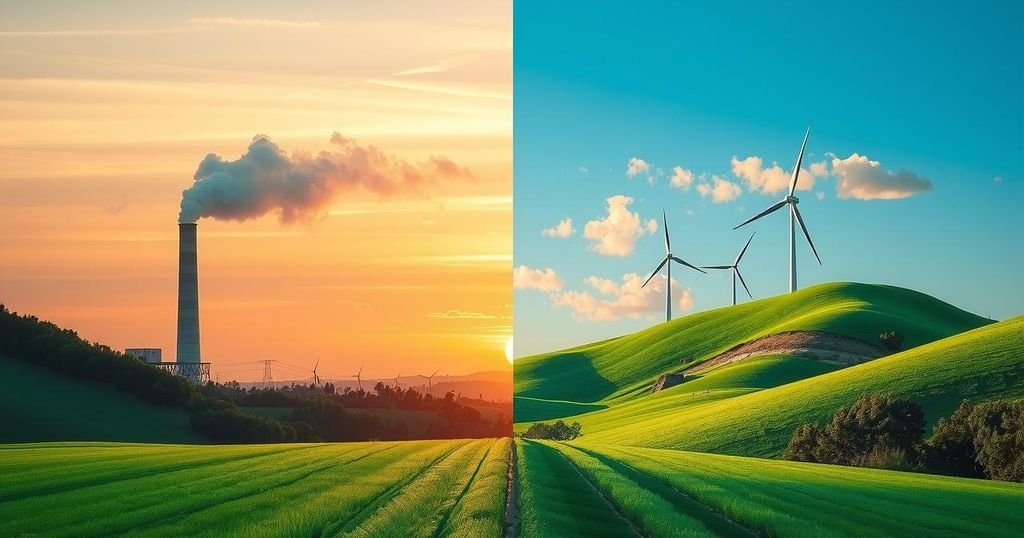Zimbabwe has submitted its 2035 climate plan to the UN, focusing on balancing energy security with emissions reductions. The plan entails increased reliance on coal and gas in the short term, with future transitions to renewable energy sources. Zimbabwe aims for a 40% decrease in per capita emissions by 2035, emphasizing the need for international funding to facilitate this transition while managing immediate power challenges.
Zimbabwe’s recent submission of its 2035 climate plan to the United Nations marks a significant milestone, being the only African nation to meet the February 10 deadline. The nation faces pressure to adopt greener policies, yet it simultaneously acknowledges the economic implications of such transitions in the short term. The submitted Nationally Determined Contributions (NDC) effectively balances the need for energy security with a commitment to emissions reduction.
To tackle immediate power shortages, Zimbabwe plans to enhance its coal infrastructure by refurbishing the Hwange coal power station and constructing a new 720 MW coal plant. This short-term strategy aims to address the decline in hydropower output resulting from prolonged droughts. Furthermore, the plan outlines a shift towards natural gas in the medium term, which, while reducing carbon intensity, will ensure reliable energy output.
Additionally, Zimbabwe aims to expand its renewable energy initiatives, particularly solar and wind projects. However, the pursuit of these alternative energy sources is hampered by funding shortages and infrastructural constraints. The Kariba hydro plant, traditionally supplying about 40% of Zimbabwe’s electricity, is currently operating at reduced capacity of 185 MW due to insufficient water availability.
The climate plan sets a target for a 40% reduction in per capita emissions by 2035 compared to a business-as-usual scenario, with projected emissions from the energy sector peaking in 2026 before experiencing a gradual decline. This illustrates Zimbabwe’s challenge in balancing immediate energy demands with the transition to more sustainable practices, particularly given the constraints of economic resources.
A call for international funding has been made, as Zimbabwe asserts that the country cannot finance its transition independently at this stage. The reliance on coal remains a pragmatic choice under current circumstances. Climate activists advocating against coal usage in Zimbabwe must recognize the significant impact of power shortages on the populace.
In conclusion, Zimbabwe’s climate plan presents a dual approach to addressing immediate energy needs while committing to long-term emissions reduction goals. The nation is navigating the complexities of energy security in light of economic constraints and environmental challenges. Continued international support is regarded as crucial to expedite the transition to greener energy sources without undermining the country’s economic stability.
Original Source: www.techzim.co.zw






